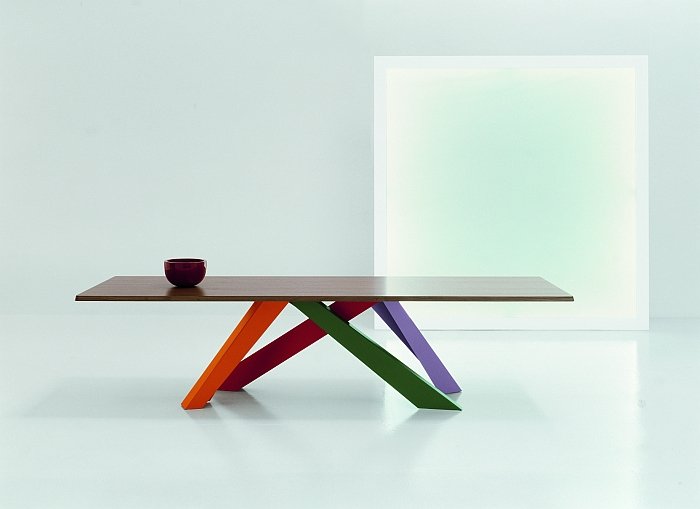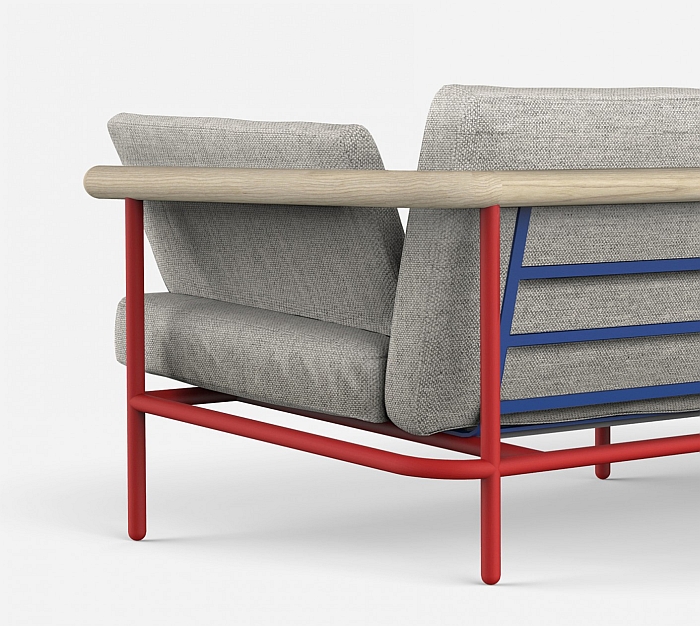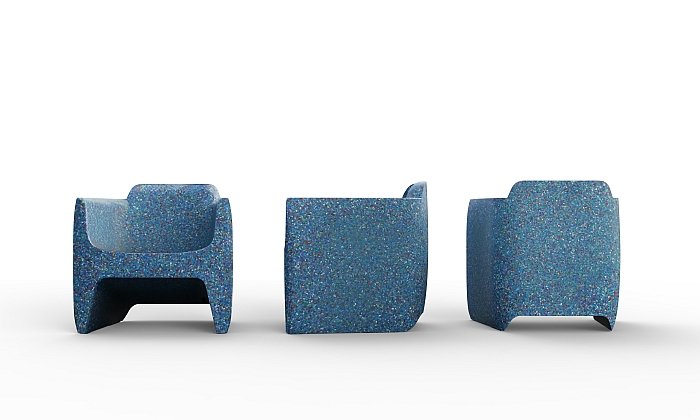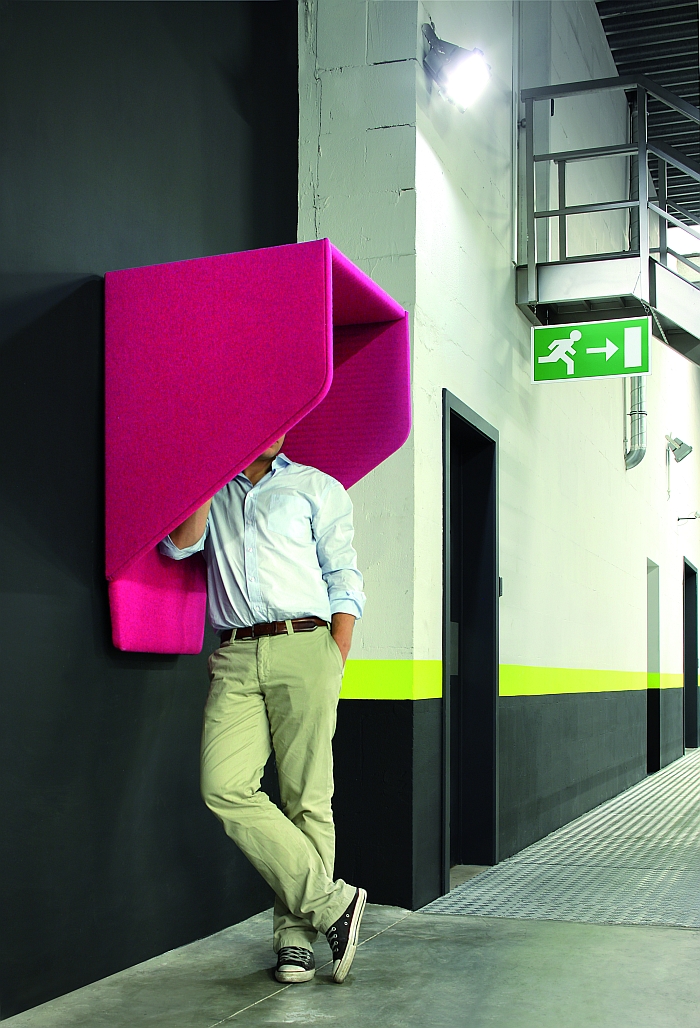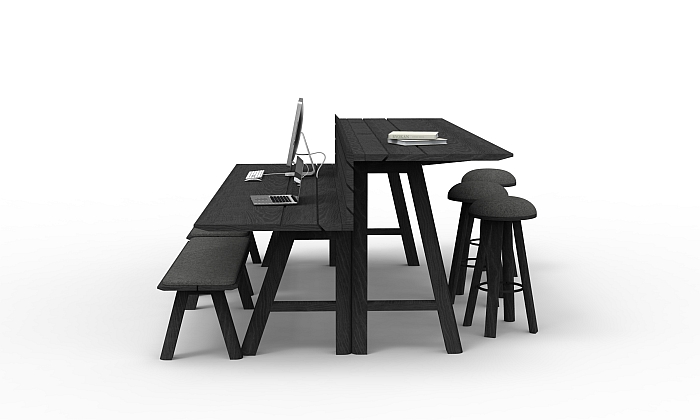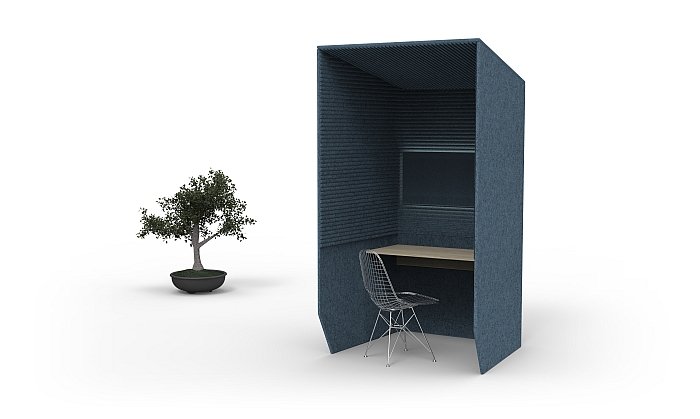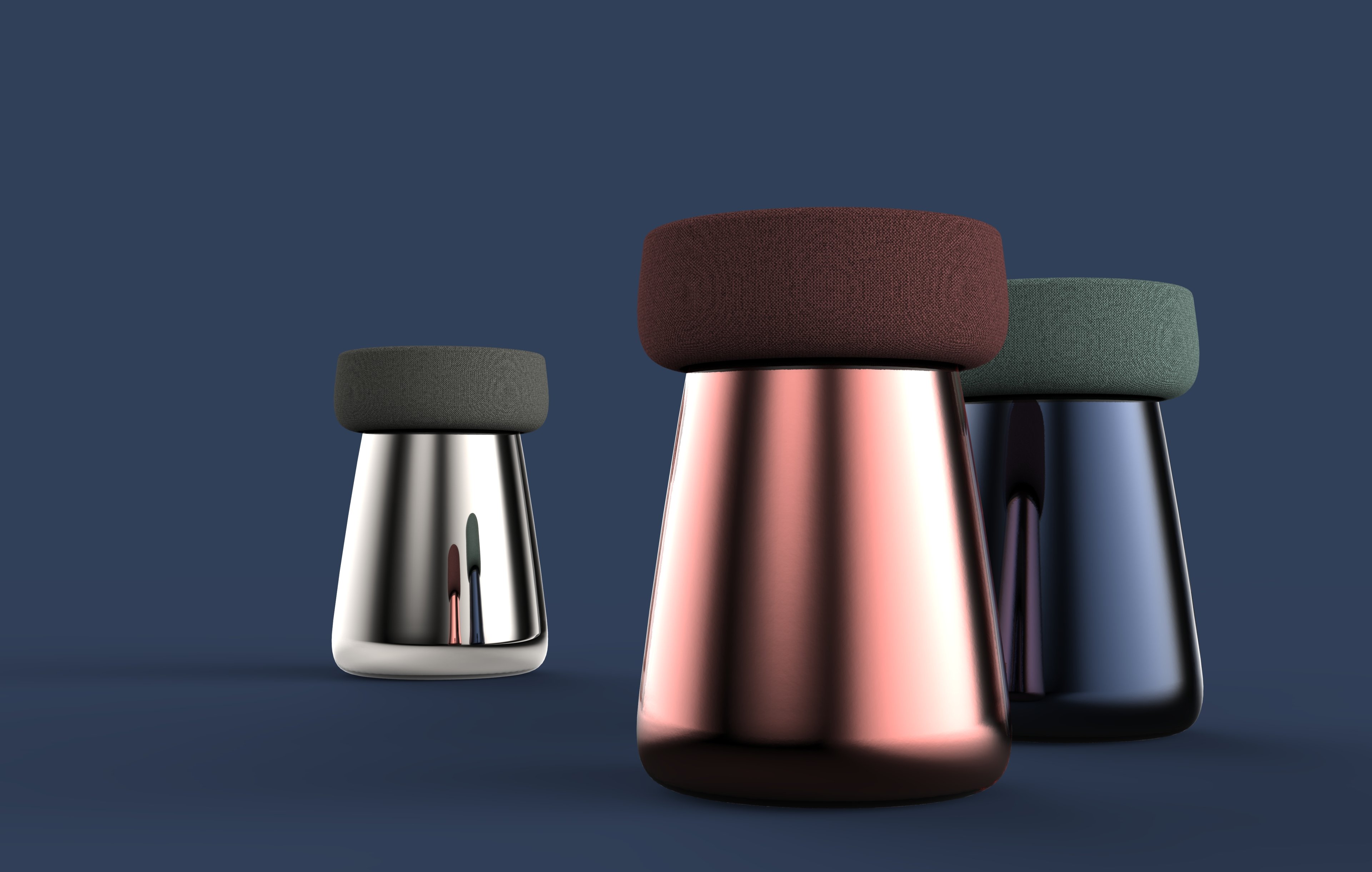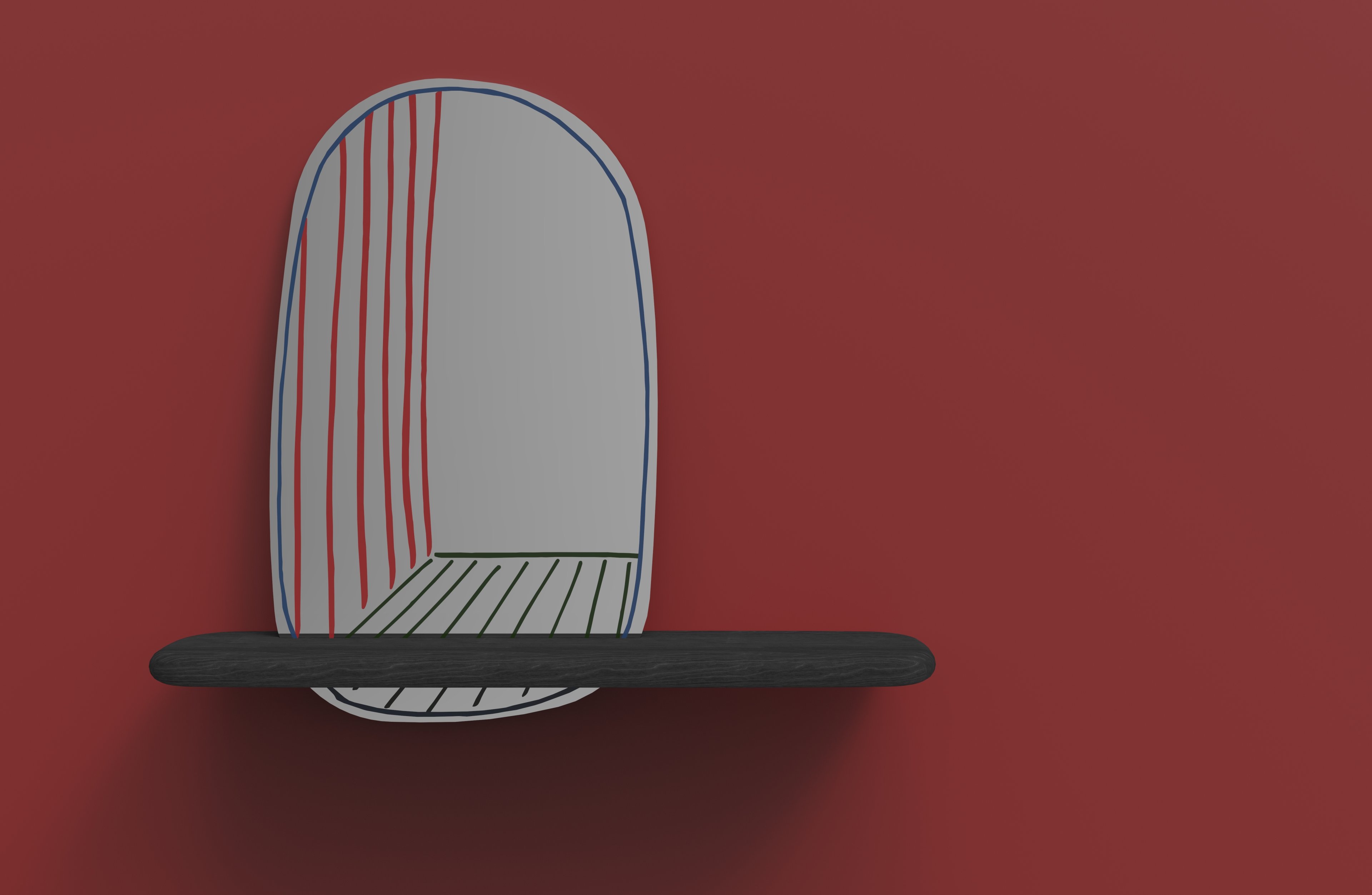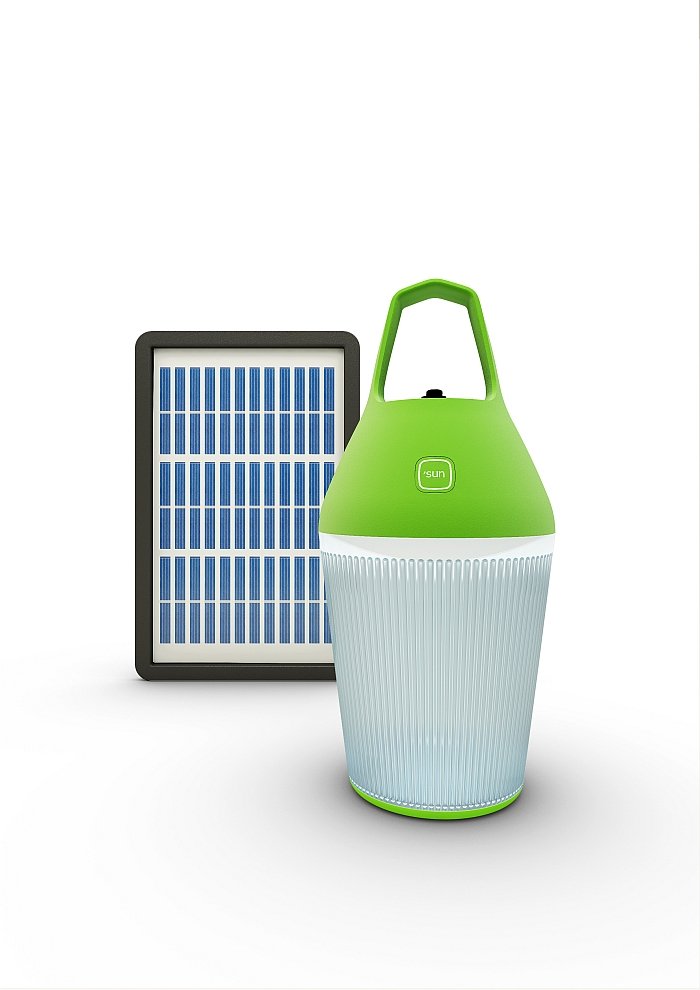Designer | Interview | Office Furniture | Producer | Product
Whereas the careers of most product and furniture designers follow a very similar path and pattern over apprenticeship, internships and college, Belgian designer Alain Gilles took a "somewhat" different route: a degree in political science being followed by five years working in the Brussels' office of international finance concern J P Morgan, before, aged 32, he began to study product design.
And that with a fair degree of success.
Since establishing his own studio in 2007 Alain Gilles has worked for and with clients as varied as Bonaldo, La Chance, Verreum and, and perhaps most notably, BuzziSpace where Alain Gillies' designs have been instrumental in establishing the Belgian producer's global position and reputation.
We first became aware of Alain Gilles through a much more humble, if every bit as interesting project: his portable solar-powered Nomad lamp for O'Sun, and since then we have taken a keen, if distant, interest in his projects. Keen to learn more we met up with Alain Gilles in his Brussels home-studio to discuss his career and his approach to and understanding of design, but began, as ever, by asking why design, or perhaps better put, why eventually design?
Alain Gilles: It's complicated, but also very simple. I always wanted to work creatively, it just took me a long time to realise that it was design that interested me. After finishing school I decided that I should study something "serious" and choose political science. Then after graduating I rented a studio space and spent six months working on, let's say, "creative" projects, which didn't really work out because I was trying to do everything at once and ended up achieving very little which was all very frustrating. And so one day I decided it wasn't working and that I should find a conventional job. The first one I applied for was with J P Morgan, which I got, and subsequently did for five long years.
smow blog: And during these five years were you then still developing creative projects?
Alain Gilles: No, not at all. For the first two years I had more or less buried such thoughts, for me I'd tried, failed and moved on; but then I found this house and started renovating it myself, and so in many ways working on the house helped me realise that what interested me was 3D forms and experimenting with colours and materials. In addition the job with J P Morgan was so far removed from what I wanted to do that it pushed me to study marketing, which I thought is a little bit more between real world and the more artistic world, but then that also wasn't enough, did however help me clarify that what interested me was design. And over time I understood that if I wanted to follow a design career, then I should study design.
smow blog: Which then took you to the Institut supérieur de design in Valenciennes. Why the decision to study at ISD?
Alain Gilles: A friend who is a designer at Tupperware told me about ISD, and on the one hand it isn't that far from Brussels which made it convenient, but what I particularly liked about it was that the studies are based in the real world, which means most of the time we were working on projects for real companies, the projects may never have been realised, but were being created in a real context. And as an experience that helped calmed me down, taught me to move forward with a project step-by-step, to work in a structured fashion and also confirmed that this was what I wanted to be doing.
smow blog: And was that from the beginning furniture design or.......?
Alain Gilles: I studied product design, but aside from the history involved what attracted me to furniture was that furniture offers an excellent platform to express your ideas. In other areas of product design you are much more limited by existing norms or the company's corporate image, but with furniture you have much more freedom. And it is also a lot of fun. However I don't want to focus solely on furniture, I do work on non-furniture projects and also recently did my first art piece which was something that I had long wanted to do.
smow blog: So "proper art" as opposed to a design gallery piece?
Alain Gilles: Exactly, I did a gallery project once but I'm not so comfortable with the idea of "limited edition", I like the idea that if I design something and people like it then a lot of people can own it, not from an egoistic perspective, but because for me that is the point. Also when you design for mass production you have to find ways to make it credible, find solutions, and create a good product for a fair price.
smow blog: Form & function, where are you?
Alain Gilles: For me the benchmark is never to lose the functionality, it doesn't have to be 100% functional, I like to create works which have a very graphic character, but they need to work as intended and to work well. When I design I start with the architecture of the product, so what you have visually in front of you, then it is a question of how do you play with that, how do you add a second or third layer to that through for example colour or finishes, and so create something unexpected, but still functional.
smow blog: Going back a step or two did you establish the studio directly after graduating, or.......?
Alain Gilles: No, not directly. Shortly before graduating I was in contact with Quinze & Milan about producing a one-off object for an event, I got into conversation with Arne Quinze, he liked what I was doing, and so I spent two and half years working with them on very good and very interesting projects for the likes of Moroso or Rem Koolhaas. And then after two and a half years I decided to set-up my own studio, and that was a scary moment, because I'd never had to go out and find work......
smow blog: How long did that then take to establish yourself?
Alain Gilles: Fortunately it all went relatively quickly because at around the same time one of the subcontractors I had recruited for Quinze & Milan decided that he wanted to start his own brand, and so I designed the first furniture collection for the French brand Qui est Paul? Parallel I was submitting proposals to various brands and Bonaldo took on the Tectonic side tables, and in the following year I designed the Big Table for them which became not only one of their biggest sellers but also their signature product, and that then opened a lot of doors.
smow blog: One of those doors was BuzziSpace, how did that cooperation about?
Alain Gilles: I was helping on a smaller brand's stand at a trade fair, BuzziSpace were also there, I really liked what they were doing, got into conversation with them and we remained in close contact, but it took about three years before we started cooperating, because it was never the right time or the right product. At that time BuzziSpace weren't doing furniture as such and so with them I was able to develop some truly innovative new ideas, whereby the fact that I had spent five years working in a big open space office really helped me because I had lived it, I could feel the problems!
smow blog: And generally do you think your business/marketing background helped with the founding of your own studio?
Alain Gilles: I definitely think the fact that I had worked elsewhere, had lived several lives, unquestionably helped, because it's funny but you don't talk about design that much when you talk to a producer, rather it's more on the one hand small talk over lunch, and on the other trying to convince them to do more than simply the safe, standard versions, but also to take a few risks and try something new, for example in terms of materials or colours. And those aren't skills you necessarily learn in design school.
smow blog: You've been working independently for nine years now, are you now at a position where producers mainly contact you, or are you still knocking on doors looking for work?
Alain Gilles: I still go out knocking on doors! I like to develop my own projects and to propose and pitch them to clients, because otherwise you just end up doing what the client wants, and if that client is an established brand one can often be quite restricted. In addition I need to be able to develop the ideas that I have, to explore my ideas and to try new things, that is something I have to do. I don't always find a client for my projects, but the process is something that can then help when I do work to a brief, often there is a cross-pollination and I can bring the experience into other projects.
smow blog: And how is the product development process with yourself, sketching, computer models, prototypes, or.....?
Alain Gilles: I don't build prototypes, that is just a waste of money. Before I started my own studio I saw so many young designers invest so much time, money and effort in building prototypes of projects which they then never sold, and so from the very beginning I decided not to build prototypes. And so here in the office we work with plans, 3D programming and rendered images, although I do always have my calipers close at hand because on the computer screen you quickly lose a perception for the scale and so it is important to be able to physically check thicknesses, distances etc... And so, yeah, I know it sounds terrible, but no I never build prototypes!
smow blog: But presumably the manufacturers then do, or......?
Alain Gilles: Exactly, and that is something they are not only generally happy to do but which makes sense. I have, for example, often seen people creating prototypes using a different process or material from the intended because they didn't have access to what they wanted. And that's pointless because you're not learning anything of value. However the manufacturers have the capabilities to develop meaningful prototypes, which also then help them understand how full scale production will work, or not.
smow blog: In terms of your work, when we look at your portfolio the one thing missing is lighting, is that something that you're not interested in or...
Alain Gilles: No, not at all, I want to do lighting! Before I studied I created a lot of lamp designs and most people thought that was the direction in which I would go. Then I got into furniture, more or less by accident, and lighting and furniture seem to be very different tracks and we've never had much luck with securing lighting projects, but it is definitely something I am very keen to do more off.
smow blog: Changing tact slightly, as a Belgian designer based in Belgium do you feel yourself visible, or.....
Alain Gilles: Because Belgium is such a small country with a relatively small domestic market we always have to think about exporting, also exporting yourself, and so when I started my first reaction was that I don't want to work for Belgian brands, because no one will see me and so I will have no possibilities to progress. And so initially I concentrated on companies in France and Italy and I was lucky in that it worked out. Then later I started working with BuzziSpace, who are yes Belgian but very internationally focussed, and that then made me better known in Belgium and now I am working increasingly with Belgian companies.
smow blog: In which context our impression is that for a, relatively, small country Belgium is home to an awful lot of furniture brands, is that the case or are we just making that up?
Alain Gilles: You're certainly right Belgium is a small country! But then Denmark is only half the size and probably has even more brands, especially today when it seems everyone in Denmark is trying to create a brand! But yes, the industry in Belgium is currently very healthy. For various historical, social, cultural reasons the interest in contemporary furniture and design has generally been stronger in the Flemish regions, so in the north of Belgium, and that is also where today most of the interesting furniture brands are based, and there are currently a lot of very good companies in Belgium.
smow blog: You yourself are based in Brussels, is Brussels a good city to be based in?
Alain Gilles: I recently saw a statistic which said that Brussels is globally the second most cosmopolitan city after Dubai. In Dubai 83% of the population were born outside the city, in Brussels its 63%, and I like the fact that Brussels is so international and that one feels the influence of different cultures, and I also like the fact that it is so imperfect. If you visit other Flemish cities they are much cleaner, more ordered, but for me that is also a lot drier, they lack sources of inspiration. Here in Brussels one regularly sees interesting little things, imperfect details that get you thinking and inspire you to develop an idea.
smow blog: But is it affordable, is Brussels an expensive city?
Alain Gilles: No not at all, it is very affordable and is therefore home to many international artists and designers, and it is also a lot more lively and vibrant a city than one might think. Belgium is a cold country and so it's not like Italy where everyone is outside socialising, however inside the bars and restaurants there is always something happening. I like to speak of the three Bs, Berlin, Barcelona, Brussels, three cities which are vibrant and relatively cheap, even if Barcelona has become more expensive of late.
smow blog: And is there an equally vibrant design community in the city?
Alain Gilles: Yes there are a lot of designers in Brussels, when not that many who are making a living as professional, independent designers, but we know one another, occasionally exhibit together and so there is definitely feeling of community here....
smow blog: ... and, and the question is always a bit complex in a Belgian context, but Belgium wide...
Alain Gilles: ... a few years ago the regional authorities tried to promote the different regions independently, because the money comes from the regional governments. For us as designers that was a shame because, for example, in Milan, you had three separate exhibitions of Belgian design, except they didn't say "Belgium", they said "Brussels", "Wallonia" and "Flanders" and so no-one understood anything. Thankfully the authorities eventually realised that and now everything is unified under "Design is Belgium" and that is very good and through that there is much more of a sense of community and much better contact between designers from across Belgium.
smow blog: To end, you mentioned earlier that don't want to just do furniture, what does that mean for your future plans?
Alain Gilles: I will definitely keep a principle focus on furniture, but would like to do more general product design. We have a couple of product design projects which are finished but not yet released, but once they are, people will see that we can also do products and so hopefully that will lead to more projects. But principally I am looking to continue having fun and enjoying what I'm doing!
Further details on Alain Gilles and his work can be found at www.alaingilles.com
